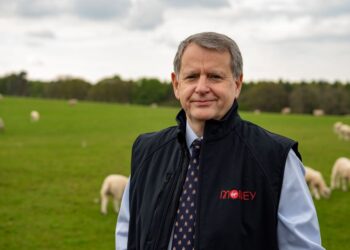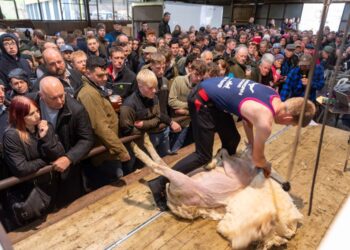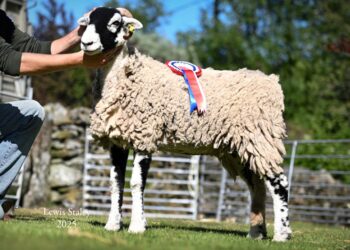Over the last 60 years or more, farmers have been encouraged to remove hedgerows in an effort to produce more food by creating larger fields, writes DANNY TEASDALE, of the Ullswater Catchment Management Community Interest Company.
We are now seeing the impact of this on our wildlife, as it has contributed to a fall in numbers of birds and insects. This is not written to jump on the “farmer bashing” bandwagon — government has encouraged and supported it.
As we move forward into reduced BPS support and the roll-out of the new environmental support program meELM — environmental land management — I think the Government will fund the replacement of these lost hedgerows where practical.
Many people will have heard the mantra regarding future farm support — “public money for public goods”. From my discussions with those in Defra, it seems highly likely hedgerow creation will play a large part in this public funding strategy.
Although Defra is capable of changing its mind at any time, it seems that part of the future funding for ELM will place a value on these trees and hedgerows as what they are calling “natural capital”. The idea is that farmer are not penalised for planting hedgerows now as opposed to waiting until ELM comes in.
A major part of the work undertaken by Ullswater Catchment Management CIC in our area is showing how farms and livestock farming can be part of the solution to many of today’s problems, not least wildlife decline, flooding and climate change.
We have worked on many farms in and around Ullswater proving how it is possible to combine farming, wildlife and natural flood management. The majority of our work is driven by our farming community, so we can target the right solution in the place that works for everyone.
There are many benefits to replanting lost hedgerows on farms.
Once established, a double fenced hedgerow provides excellent shelter for stock in poor weather, somewhere for birds to nest and a source of food over winter from their berries.
The leaves shed in the autumn provide a good source of organic material for soils, which in turn feeds worm populations which help to naturally break up and nourish soils.
As the hedges grow, their root systems helps to break up and aerate the soil, which helps with water infiltration and builds a more resilient soil that can better tolerate drought and flooding.
The newly planted hedgerows soon act as wildlife corridors for small animals such as red squirrels which do not like to travel across open ground when moving from tree to tree.
With modern equipment such as flail mowers, it has become more time efficient to trim back hedges mechanically on a yearly basis. This might be needed where there are junctions or roads, but historically these hedgerows were hand laid.
By laying the hedges as opposed to flailing them, you end up with really thick stockproof undergrowth that then sends up vigorous shoots in future years and helps keep that shelter in poor weather for wildlife and livestock.
One other important point worth bearing in mind with a hedgerow managed in this way is the good supply of firewood. A hedge laid every 12-15 years provides an awful lot of logs. Given the uncertainty of future farm support, it may be another revenue stream worth looking into.
We have had some great support from the Woodland Trust over the last five years, providing a flexible way of funding which simplifies the whole process.
I’m sure I’m not alone in finding the whole bureaucratic process of countryside stewardship applications somewhere between tedious and soul destroying. Grants vary in size from somewhere between paying for materials and trees to 100 per cent of the cost, depending on where the funding is from and the criteria attached.
When there are grants available it gives us the opportunity to see where a hedge might work on a farm. If the farmer agrees with me, it is as simple as finding a local fencing contractor to get the work done and then we arrange the planting over winter.
It does not need to be much more complex unless you are involved in current high or mid-tier stewardship agreements.
Any landowners are welcome to get in touch who think that they might have a suitable parcel of land. More information can be found at www.ucmcic.com or I can be contacted at dannyteasdale@ucmcic.com































